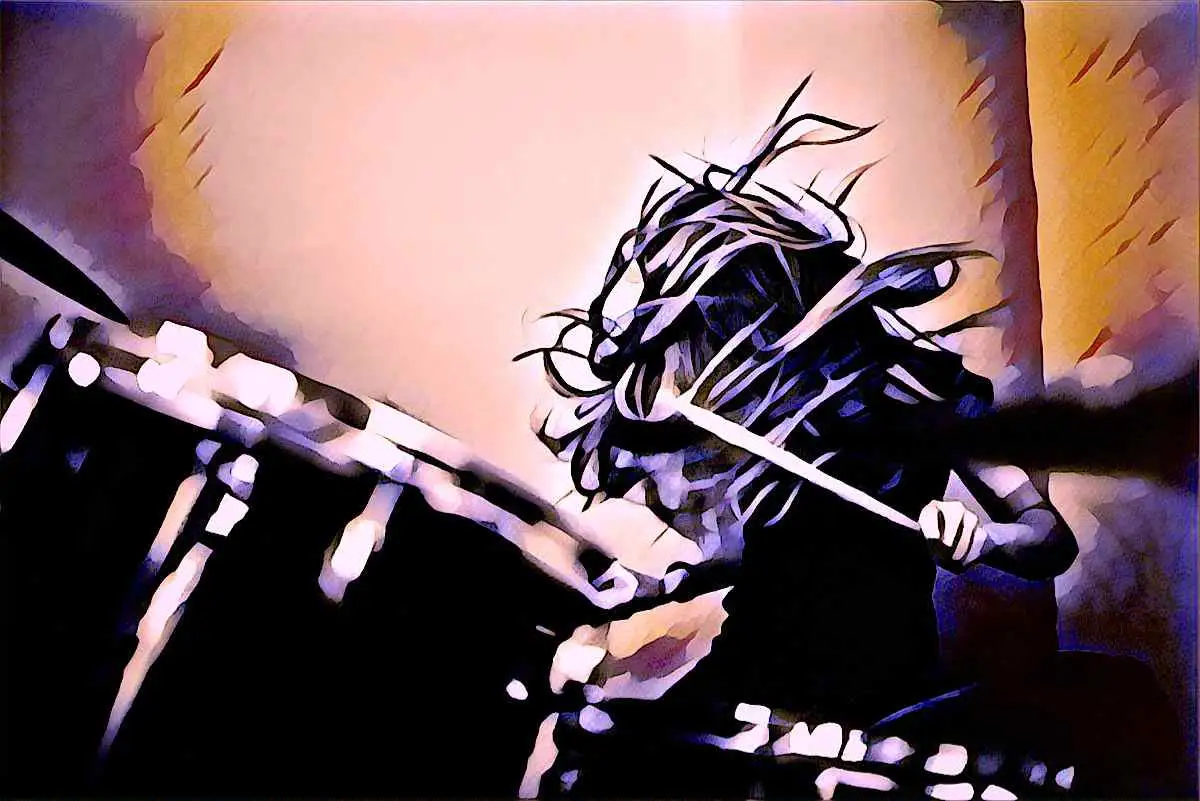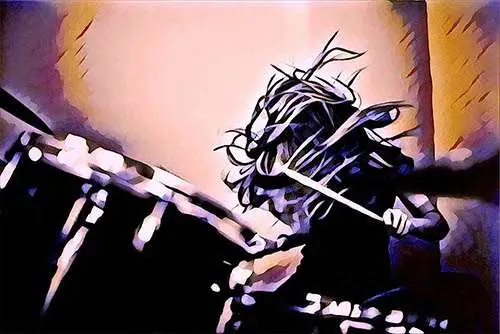Gershwin had it. Gloria Estefan warned us it was gonna get us. Janet Jackson sang of an entire nation made up of it. But when it's at home, what is rhythm?
There's a high probability that as a living, breathing human being you can already recognize a rhythm when it knocks on your door. But if you're completely bewildered when it comes to understanding the nitty-gritty behind rhythm then you have come to the right place!
In this article, we're going to look at how rhythm forms the backbone of music, core elements of the theory behind rhythm, and how to set about learning it.
Along the way we'll see and hear some examples of rhythm in action, and take a peek at some common rhythms found in contemporary western music. By the time you finish this article you'll be able to proudly join forces with the Go-Gos , and say 'We Got The Beat'.
What Is Rhythm In Music?
It's complicated.
When we're talking in the context of music, rhythm can be described as patterns of notes (and the spaces between them) that are organized in time in a regular way. These can be notes with a pitch (Slash guitar playing the searing intro to ' Sweet Child O' Mine '), or a drummer playing a beat (John Bonham's famous drum intro for the Zep's ' Rock And Roll ').
But it's also more than that. Rhythm - obvious or implied - is the glue that holds a piece of music together. It's the secret sauce that musicians sprinkle over their playing to create a 'pocket'. It's the groove that tugs at your feet to get them tapping.
Outside of music you can hear rhythms in nature; cuckoos singing, waves on the beach. And in man-made objects too; the 'click-click' of an indicator on a car dash, a train running over it's tracks.
It's the relationship between what you're hearing and how you perceive it in time.
So, yeah, it's complicated. And if you are planning on being a musician, whether performing or producing, it's hugely important to understand how rhythm works.
Why Is Rhythm Important?
There's a few reasons really. Firstly, without a great sense of rhythm you're going to have a hard time playing together with your band mates / orchestra / ukelele-kazoo duo. And like with any theory, it can be a really useful shorthand when communicating with musicians and artists. While there are many elements that make up a piece of music, it's rhythm DNA is one of the most important.
Understanding the foundations behind rhythm will also enable you to recognize or deconstruct any rhythm you hear and play it for yourself. Which leads us nicely into the deep science laboratory part of this article. Grab a cuppa and prepare to have your mind melted by compound duple time, polyrhythms, and hemi-demi-semi-quavers...
Rhythm Theory: The Core Components of Rhythm In Music
So we've talked about how rhythmic structure is the arrangement of notes in time. Now we're going to deep dive into the elements that contribute to this toe-tappy organizational principle. Get ready for music theory class...
Tempo
Tempo is a fancy word to use when you're talking about the speed of the music you're playing. There's a few ways to describe the tempo of a piece. If you're super on the nose and say 'it's fast', or 'play it with a slow tempo' that's not going to help anybody since it's a very general and subjective way of describing speed. Instead, you can use traditional Italian terms like 'andante', or 'vivace' ('at a walking pace', and 'fast and lively', respectively). There's a whole range of them, but they're traditionally used for classical music.
You could be more descriptive about the tempo. For instance a down tempo ambient track could be described as being 'About The Pace You Move At After Only Three Hours Sleep'.
But the most specific way to refer to tempo is by using the BPM - Beats Per Minute. It's also how all DAWs interpret tempo.
One other thing to remember about tempo is that it can fluctuate throughout a song. The chorus might be ever-so-slightly faster. There might be a big slowing down at the end - which you may hear referred to as a 'rit' (short for 'ritardando' - another Italian phrase from the before-times).
Notes
Playing notes of different lengths is what gives rhythms interest and movement. And understanding how these different lengths are represented in note-form will help you understand how rhythmic patterns are built.
Starting at the top of the chain, we have the whole note - which lasts for four beats, or counts.

Next we have the half note, lasting for, you guessed it, two counts!
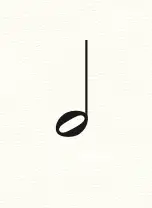
And this guy... do I even need to tell you how long the quarter note lasts? You're right - it's one beat.
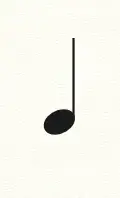
Getting into fractions now, the eighth note lasts half a beat.

And the sixteenth note lasts a quarter of a beat. Which is a little confusing, since there's already someone with that name. But don't shoot the messenger!
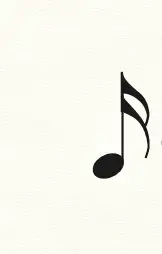
In some countries these notes have different, and slightly amusing, names:
WHOLE NOTE = Semibreve
HALF NOTE = Minim
QUARTER NOTE = Crotchet
EIGHTH NOTE = Quaver
SIXTEENTH NOTE = Semi-quaver
Confused? Hold on, there's one more thing. A dot after a note lengthens it by half of it's own value.
So this tiny fella

would last for one and a half beats.
Measures
In order for music not to become a sprawling mess, it's organized into tidy little units, called measures. A rhythmic pattern can span one or more measures. And these measures are subdivided by a code called the Time Signature.
Time Signature
Those numbers you see at the beginning of a piece of sheet music? That's a time signature. It tells us crucial information about the music. Even if you're not using sheet music it's still useful to understand how time signatures work. They're made up of two numbers, like this:
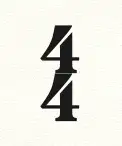
The top number tells us how many beats are in each measure (or bar), and the bottom tells us how long each of those beats lasts. A figure '4' tell us each beat is a quarter note in length, and an '8' tells us each beat is, well, half a beat long, or an eighth note.
In the above example, expressed in text form as 4/4, there are four counts in every measure, and each of those counts lasts for one beat. This is one of the most common time signatures, and is pretty much the norm in most popular music. You may also come across 3/4 time (sometimes called 'waltz time'), which has three beats per measure, and 2/4 (or 'march time').
Simple Time
Time signatures get described as being in simple or compound time, depending on how the shorter beats are grouped within each measure. In simple time, the shorter notes (usually eighth notes) are grouped in twos.
Compound Time
You may find some tunes in 6/8, 9/8, or 12/8. This tells us there are 6, 9, or 12, beats per measure, and each beat is the equivalent of an eighth note. Measures in these time signatures are made up of two groups of three eighth notes. These time signatures are referred to as compound time.
Odd Time
If you're particularly unlucky your drummer might tell you that the next song is in 5/4. It's called odd, because the notes in these time signatures are unevenly grouped. In 5/4 you may have a group of three and a group of two, or vice versa, depending on the piece of music you're playing.
Pulse
A pulse is the (often) unplayed heartbeat of a piece of music. Even if no instruments are actually playing it, the pulse is always there. You know when your foot taps along to the music? That's the pulse at work. And if you can grab hold of the pulse you can fashion all sorts of rhythmic magic with it.
Accents
Within measures, notes will be divided into strong and weak beats (sometimes called the off beats). Typically the first beat of every measure will be the most heavily accented, which is what gives music it's underlying pulse. Think of musical accents as the same as stressed syllables in speech. Using Harry Potter as an example, the first syllable is the most accented, with the third syllable also accented:
HA -rry PO-tter
Sticking with this strange theme, in Hermione's name the accent falls on the second syllable:
'Her- MI -0-ne'
These accents are what give rhythmic patterns their personality.
Meter
In standard Western music, time signatures are divided into different types of meter, depending on how the regular recurrence of strong and weak beats happen.
Duple Meter
In duple meter, beats are grouped in twos. The easiest way to think of duple meter is by using speech. Try saying 'CO-ca CO-la'. That's duple meter right there!
Triple Meter
Triple meter time signatures have beats grouped in threes. Sticking with the speech analogy, say 'STRAW-ber-ry' over and over a few times, and you'll have your triple meter locked down.
Quadruple Meter
By this point, you'll have worked out that quadruple meter groups beats into clusters of four. If you like curry, say 'CHI-cken Tik-ka' repeatedly until you're hungry, and there you have quadruple meter.
Mixed Meters
You're not stuck to just one meter either. Like any good cocktail, they can be mixed. An example of mixing quadruple meter and duple meter is the opening of 'Hooked On A Feeling' by Blue Swede . Yes, the Guardians Of The Galaxy soundtrack still reigns supreme in my house, and it is educationally solid.
Syncopation
Syncopation is the backbone to complex rhythms. It's when notes are accented away from the usual strong notes of the musical meter, and tied (held over) to the next strong beat. It's what gives music it's sway and lilt.
Pretty much any song that has captured your attention will make use of syncopation, so it's a really important concept to get under your hands.
Ostinato
Less of a brain melting concept, and more a term that's useful to know. An ostinato is a regularly repeated musical pattern, be it melodic, rhythmic or chordal. You're probably more familiar with it's other name - 'riff'.
Polyrhythms
As if all this wasn't enough, some styles of music like to take rhythms in different time signatures and play them on top of each other. This is particularly common in Latin American genres, and originated in African music. I think by this point you've had a headful of theory, so when you're ready to learn more about polyrhythms check out this article .
How To Learn Rhythm
It's all very well reading about all the aspects that make up the theory behind rhythm. But how do you go about actually learning it? Like with most things musical, it's practice, practice, practice. But there's several things you can do to help you on your journey.
- Take some music theory classes, ideally with a tutor, to help cement the ideas discussed above.
- Use words to understand rhythmic patterns.
- Practice clapping out different rhythms, either the ones you hear, or ones you read from sheet music. When you're doing this try counting the beats of the pulse out loud while you clap the rhythm.
- Listening to rhythmic patterns and beats in music is a great way to learn. Play along with them, and once you think you've got it, try playing it on your own.
- Make sure you practicing your instrument is a daily item on your calendar. Use a metronome to keep you in time so you don't rush. It can also help to tap out the pulse created by the metronome on your body while playing or tapping the rhythm with the other hand.
- Play with others! Nothing will improve your rhythmic chops more than jamming with other musicians so find a jam night near you and step up. Don't be shy!
Basic Types Of Rhythm
Listening is by far the easiest way to begin to understand the answer to the eternal question 'what is rhythm?'. To get you started, here are some basic rhythms.
Each example is written in standard notation and has an audio sample. In each sample a metronome is playing the pulse at the same tempo each time, so you can hear how the patterns interact with it. The tempo of each example is the same, and the first bar of each is just the metronome, so you can get a feel for the pulse.
WHOLE NOTES
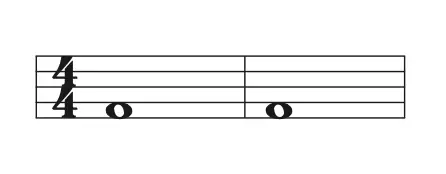
HALF NOTES
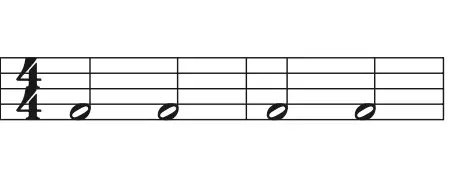
QUARTER NOTES

EIGHTH NOTES

SIXTEENTH NOTES

4/4 TIME

3/4 TIME
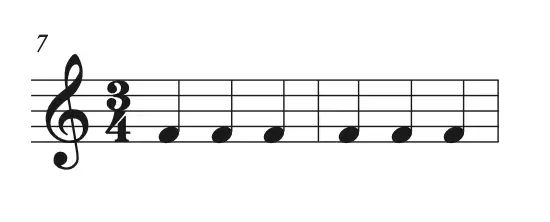
6/8 TIME

12/8 TIME

EXAMPLES OF BEATS
DISCO
An oldy, but a classic that you can still hear the influence from today. Listen to how the kick plays all four quarter notes, and the open hi hats accent the normally weaker off-beats.

ROCK
There are a bajillion different rock rhythms, but here's an old classic:

REGGAE
Reggae uses a distinct rhythmic style by accenting the third beat of every measure. In the example below you'll hear it played on the kick drum.

BLUES
Blues is often played in compound time - 6/8 or 12/8. In the example below you can hear the ride playing the triple meter eighth notes, while the kick plays the first note, and the final eighth note of the fourth beat.

FUNKY
Some styles rely heavily on syncopated rhythms. In the example below listen to the syncopation created by the snare, and how it interacts with the ride cymbal playing the weak beat, and the down beat played by the kick on the first note of every bar.

Other Examples Of Rhythm In Music
Talking about rhythm in music is all very well, but some aspects of rhythm are best understood by listening.
Syncopation:
James Brown's Funky Drummer is a great example of syncopation at work. Listen to how the strong accents fall just ahead of the first beat of each measure.
Odd Time:
Dave Brubeck's Take Five is a well-known tune that uses odd time, in this case 5/4. Listen to how the accents fall on the first beat of each measure to ground you. That's the one. Lock that in and try counting along with the track.
Polyrhythms:
The opening to Led Zeppelin's Kashmir is an example of a polyrhythm at work. The drums are playing a solid steady 4/4, while the guitar plays a 3/8 pattern. To wrap your head around it, count along with the drums 'one-two-three-four'. Once you've nailed that try counting 'one-two-three' with the guitar. Then try switching between the two.
Conclusion
So there you have it, my friend! It's a whole lot to take in, I know. But Rome wasn't built in a day, and you too can build your musical rhythm nation. It's all about the journey, so give yourself the gift of time, be patient, and I'll see you at Syncopation Station ;)
FAQs
What's the difference between rhythm and beat?
A beat is a unit of musical measurement that has a regular recurrence, whereas a rhythm will have varying note lengths that play around the beat. Some people also refer to the beat when they are talking about what the rhythm section is playing.
What's the difference between rhythm and melody?
A melody is a series of pitches arranged in time in a particular order, with each pitch lasting a specific length. A rhythm is a series of notes (pitched or unpitched), with each note lasting a sepcific length. You need pitches to have a melody, but that's not necessarily the case with a rhythm.
Can melody exist without rhythm?
Not in it's truest form, no. Without rhythm the notes of a melody are just the musical DNA of a tune. Useful, but not if you want your audience to hum it.
How do you know the rhythm of a song?
Every song will have a bunch of different rhythms in it. The drums will be playing something. The guitars something else. The bass will play a pattern that complements the drums, but isn't the same. The hook will have it's own rhythm. All the elements complement each other to make the music pop.
Is rhythm natural or learned?
That, my friend, is a long standing debate. My take is that we all have some form of rhythmic perception from birth, but in order to be a top musician you have to put in the work and learn it. Some people seem naturally adept at rhythms, and that's probably because they were exposed to a whole bunch of music as they were growing up. They learned rhythm without realizing they were doing so!
How important is rhythm to music?
Without it we'd all be screwed. Even if you're producing Brian Eno-esque ambient pieces there's still an underlying pulse that guides the piece. If you want to play or produce music you need to understand rhythm.
How is rhythm written?
The same way melodies are: using standard notation. A drum part will have different shaped note heads to differentiate between parts of the kit, but the notes are conveying the same information.
What is the purpose of rhythm?
To create interest in music by varying the strong beats and the weak ones.
Is rhythm more important than melody?
They are both equally important to me, but you could argue that there is no melody without rhythm, and there's your winner. If you're a drummer, the answer is definitely always yes.
What will happen if there is no rhythm?
You/your band will lose the gig. Music will become a dribbling mess of uncertainty. And no-one will be able to dance, either on the ceiling , or normally.


